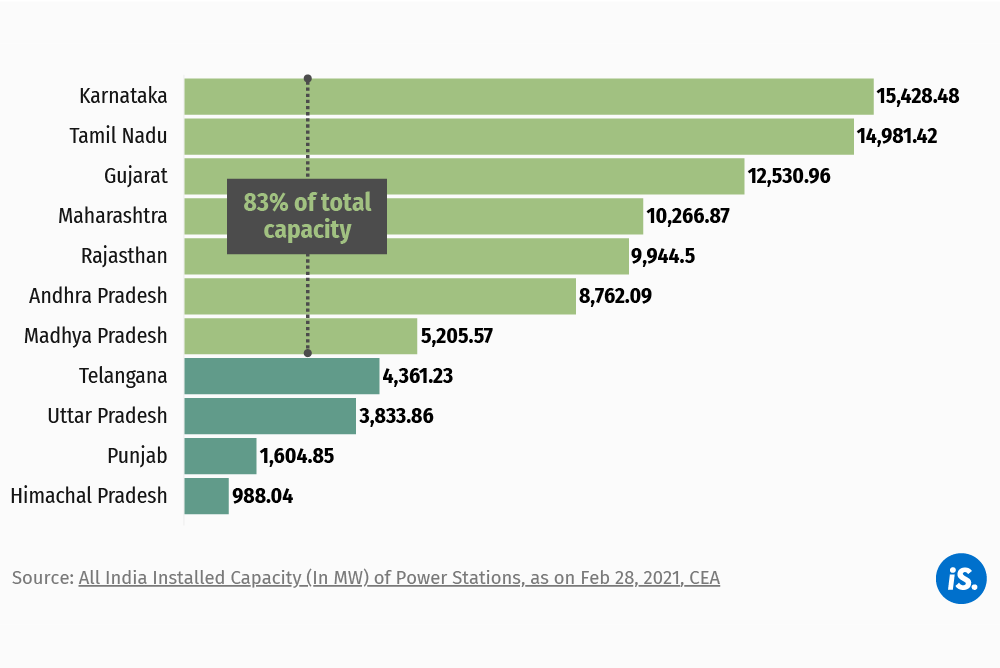How Renewable Energy Became Price-Competitive With Conventional Power
Conducive policies and grid infrastructure explain why states that installed wind power capacity three decades ago have attracted solar investments in recent years

Renewable energy resources are unevenly distributed across India. Commercially viable wind power capacity was the first to be developed on a large scale in the 1990s, mostly in the western and southern states, thanks to the incentive of accelerated depreciation (AD) that the government offered. (AD is an income tax benefit which allows faster depreciation of assets, reducing the tax burden. In the case of renewable energy, AD rate was 100% earlier, and has now been reduced to 40%. This compares favourably with other machinery, which depreciates at a 15% rate.)
Nearly 83% of all wind installations are in Rajasthan, Madhya Pradesh, Gujarat, Maharashtra, Karnataka, Andhra Pradesh and Tamil Nadu. Against the common misconception that wind power is generated mostly in coastal areas, several large wind projects are, in fact, located in the interiors of MP, Rajasthan and Maharashtra. To the contrary, there are almost no wind projects in coastal Odisha.
Solar power resources are more evenly distributed. Yet, most solar capacity addition is seen in the states already rich in windpower. This points to conducive policies and infrastructure for setting up of RE power plants, since wind projects have been running there for close to three decades. For example, UP and Haryana, historically without RE installations, have only recently developed their RE policies. As a result, only in recent years has solar capacity there started to come up.
Data visuals designed by Gokulananda Nandan and Gulal Salil.
Here are other Data Viz of the series:
Renewable Energy: How India Is Faring
How Renewable Energy Took Off In India
How India Stacks Up Vis-a-Vis Other Countries In Renewables
How Renewables Other Than Solar And Wind Have Fared
Remaining Challenges For Renewables In India
We welcome feedback. Please write to respond@indiaspend.org. We reserve the right to edit responses for language and grammar.


